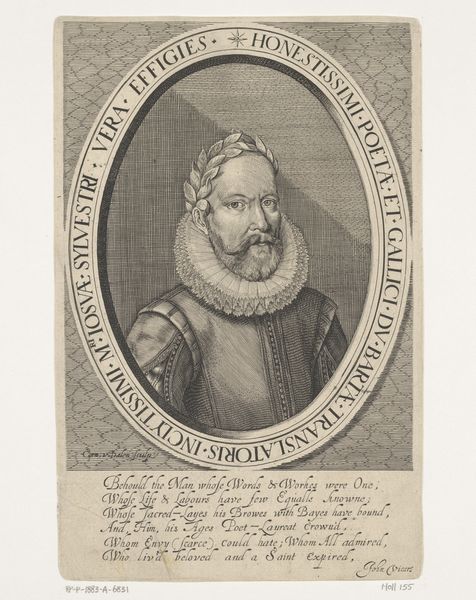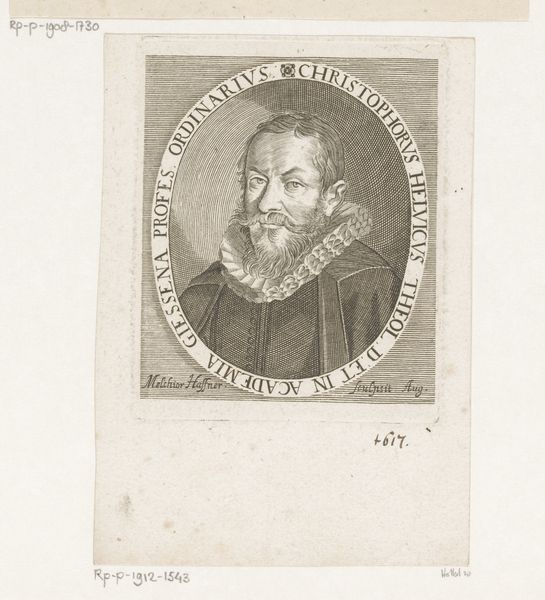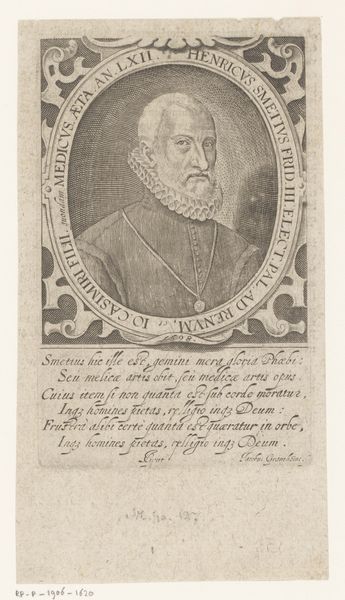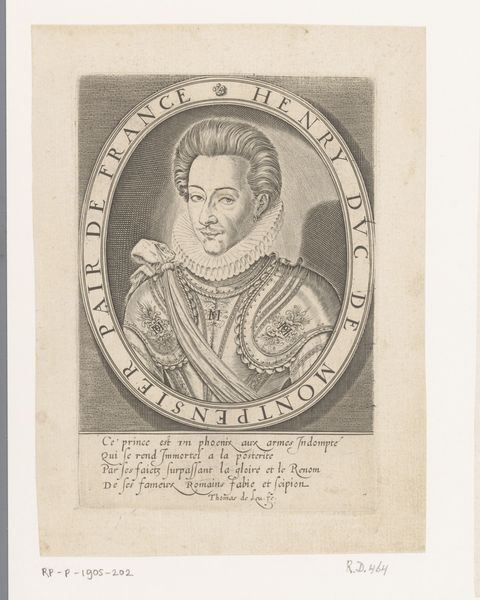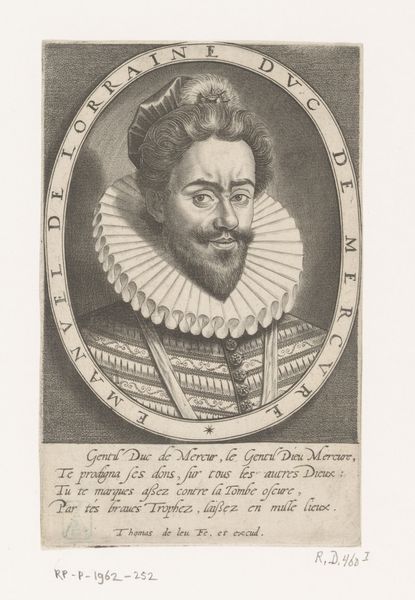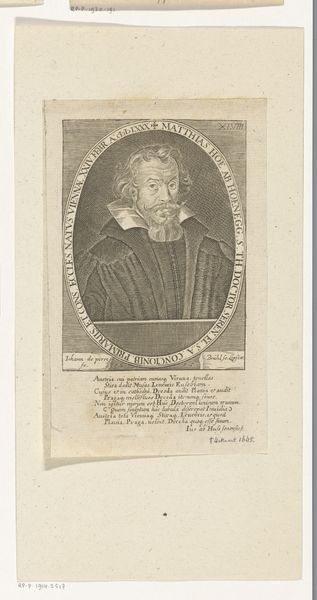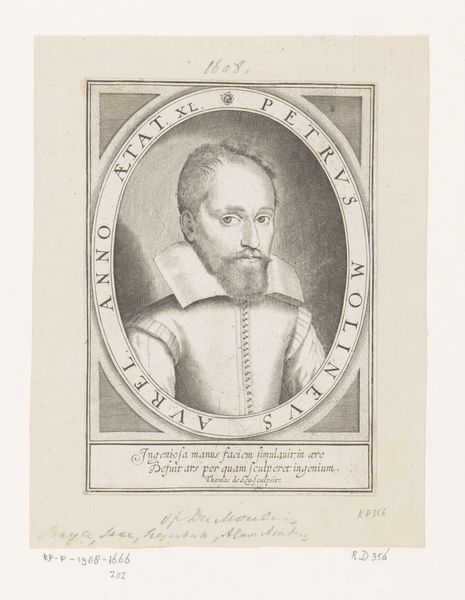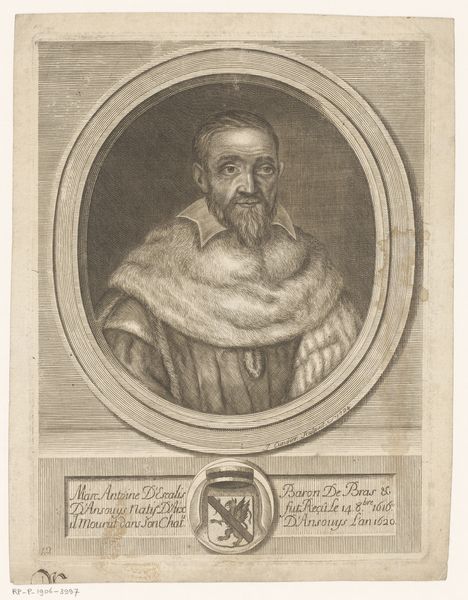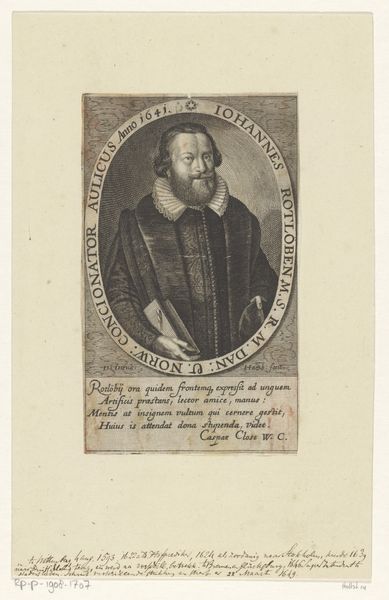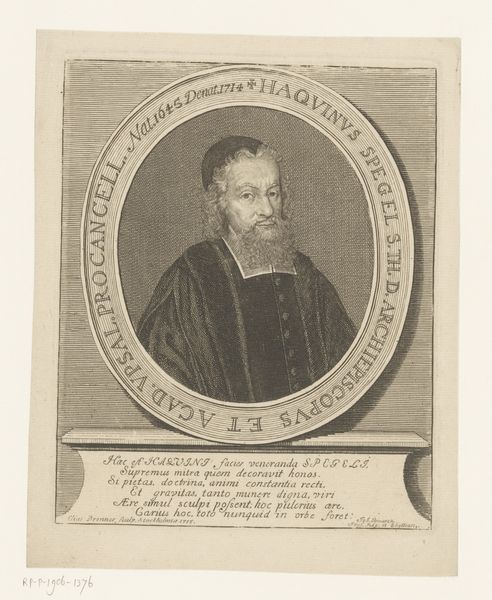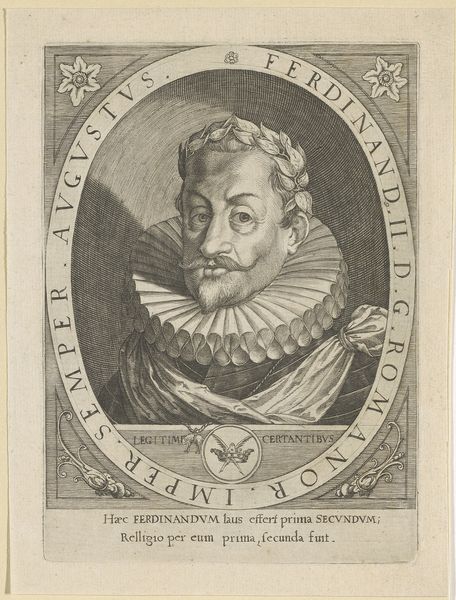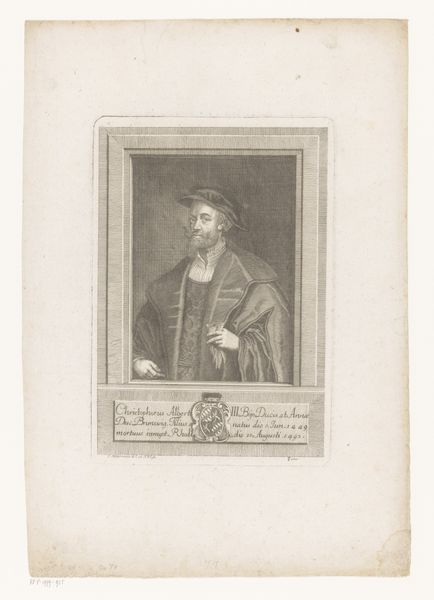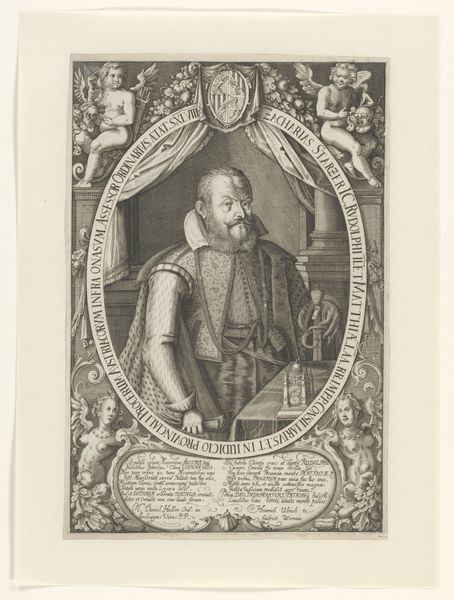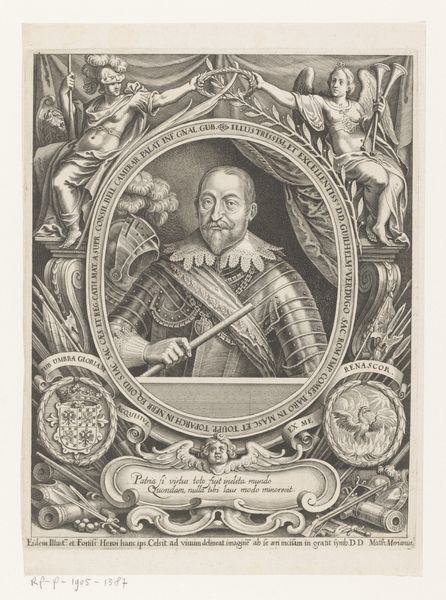
print, engraving
#
portrait
# print
#
11_renaissance
#
engraving
Dimensions: height 152 mm, width 97 mm
Copyright: Rijks Museum: Open Domain
Curator: Up next, we have a piece identified as "Portret van Jean-Louis de Nogaret de La Valette," an engraving that dates from between 1576 and 1614, crafted by Thomas de Leu. Editor: The intensity of the subject's gaze really strikes me. He appears self-assured, perhaps even a bit imposing, trapped within the decorative lines that surround his oval portrait. You can see the weight of societal expectation in his eyes. Curator: De Leu’s skill as an engraver is clearly on display here. Look closely at the intricate detail of the ruff, each fold and pleat meticulously rendered through precise cuts into the metal plate. Note also the strategic use of hatching and cross-hatching to create subtle gradations of tone, giving the face depth. Editor: The ruff itself speaks volumes about the constraints placed upon identity, both literally and figuratively. How that very restrictive fashion item becomes such an icon of wealth. What statements does this piece suggest in the light of its socio-economic background? How did labor and value interact during this era? Curator: Considering it's a print, likely produced in multiples, raises fascinating questions. Was this commissioned directly by La Valette to solidify his image and social standing through wider circulation? These are not just static images, but crafted to play an important part in a carefully managed system. Editor: I wonder, too, about the role of class in the making of art like this. This feels tied to systems of patronage, designed to benefit elite power structures and affirm their visibility while othered people stayed out of sight. And even further questions about the accessibility of the print in society at the time of its release. How far could La Valette expect its influence to go? Curator: Exactly. It is an example of how images serve both an aesthetic function, and are products for distribution within a given socio-economic context. Editor: It reminds us how artistic choices aren't neutral; they’re imbued with purpose and function. Food for thought.
Comments
No comments
Be the first to comment and join the conversation on the ultimate creative platform.
